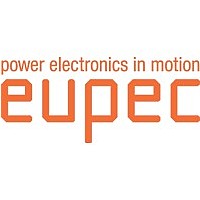PEF 20525 F V1.3 Infineon Technologies, PEF 20525 F V1.3 Datasheet - Page 69

PEF 20525 F V1.3
Manufacturer Part Number
PEF 20525 F V1.3
Description
IC CTRL PPP/HDLC SERIAL TQFP-100
Manufacturer
Infineon Technologies
Datasheet
1.PEB_20525_F_V1.3.pdf
(252 pages)
Specifications of PEF 20525 F V1.3
Function
Serial Optimized Communications Controller
Interface
ASYNC, BISYNC, HDLC, PPP
Number Of Circuits
2
Voltage - Supply
3 V ~ 3.6 V
Current - Supply
50mA
Power (watts)
150mW
Operating Temperature
-40°C ~ 85°C
Mounting Type
Surface Mount
Package / Case
100-LFQFP
Includes
Bit Processor Functions, Serial Communication Controllers (SCCs)
Lead Free Status / RoHS Status
Lead free / RoHS Compliant
Other names
PEF20525FV1.3X
PEF20525FV13XP
SP000007592
PEF20525FV13XP
SP000007592
- Current page: 69 of 252
- Download datasheet (4Mb)
PEB 20525
PEF 20525
Functional Overview
Interference Rejection and Spike Filtering
Two or more edges in the same directional data stream within a time period of 16
reference clocks are considered to be interference and consequently no additional clock
adjustment is performed.
Phase Adjustment (PA)
Referring to
Figure
29,
Figure 30
and
Figure
31, in the case where an edge appears in
the data stream within the PA fields of the time window, the phase will be adjusted by 1/
16 of the data.
Phase Shift (PS) (NRZ, NRZI only)
Referring to
Figure 29
in the case where an edge appears in the data stream within the
PS field of the time window, a second sampling of the bit is forced and the phase is
shifted by 180 degrees.
Note: Edges in all other parts of the time window will be ignored.
This operation facilitates a fast and reliable synchronization for most common
applications. Above all, it implies a very fast synchronization because of the phase shift
feature: one edge on the received data stream is enough for the DPLL to synchronize,
thereby eliminating the need for synchronization patterns, sometimes called preambles.
However, in case of extremely high jitter of the incoming data stream the reliability of the
clock recovery cannot be guaranteed.
The SCC offers the option to disable the Phase Shift function for NRZ and NRZI
encodings by setting bit ’PSD’ in register
CCR0L
to ’1’. In this case, the PA fields are
extended as shown in
Figure
30.
Now, the DPLL is more insensitive to high jitter amplitudes but needs more time to reach
the optimal sampling position. To ensure correct data sampling, preambles should
precede the data information.
Figure
29,
Figure 30
and
Figure 31
explain the DPLL algorithms used for the different
data encodings.
Data Sheet
69
2000-09-14
Related parts for PEF 20525 F V1.3
Image
Part Number
Description
Manufacturer
Datasheet
Request
R

Part Number:
Description:
Manufacturer:
Infineon Technologies AG
Datasheet:

Part Number:
Description:
Manufacturer:
Infineon Technologies AG
Datasheet:

Part Number:
Description:
Manufacturer:
Infineon Technologies AG
Datasheet:

Part Number:
Description:
Manufacturer:
Infineon Technologies AG
Datasheet:

Part Number:
Description:
Manufacturer:
Infineon Technologies AG
Datasheet:

Part Number:
Description:
Manufacturer:
Infineon Technologies AG
Datasheet:

Part Number:
Description:
Manufacturer:
Infineon Technologies AG
Datasheet:

Part Number:
Description:
16-bit microcontroller with 2x2 KByte RAM
Manufacturer:
Infineon Technologies AG
Datasheet:

Part Number:
Description:
NPN silicon RF transistor
Manufacturer:
Infineon Technologies AG
Datasheet:

Part Number:
Description:
NPN silicon RF transistor
Manufacturer:
Infineon Technologies AG
Datasheet:

Part Number:
Description:
NPN silicon RF transistor
Manufacturer:
Infineon Technologies AG
Datasheet:

Part Number:
Description:
NPN silicon RF transistor
Manufacturer:
Infineon Technologies AG
Datasheet:

Part Number:
Description:
Si-MMIC-amplifier in SIEGET 25-technologie
Manufacturer:
Infineon Technologies AG
Datasheet:

Part Number:
Description:
IGBT Power Module
Manufacturer:
Infineon Technologies AG
Datasheet:

Part Number:
Description:
IC for switching-mode power supplies
Manufacturer:
Infineon Technologies AG
Datasheet:










